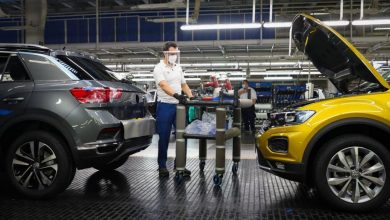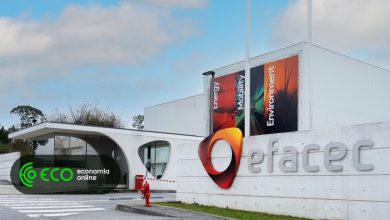
Industry Insight: An Interview With McLaren CEO Mike Flewitt
It is the morning of what would have been the opening Geneva Motor Show of this decade, but we are not at the usual Palexpo convention center. Instead (following the show’s precautionary cancellation due to the coronavirus), I have driven down to the London suburb of Woking and to the McLaren Technology Center where earlier the marque revealed the new 765LT.
It really is a visual treat seeing the supercar within the Foster + Partners designed building: the clean architectural lines complement one another. Afterwards, I am ushered to a quieter studio at the other end of the building where customers typically discuss their supercars with the McLaren Special Operations team. I meet with company CEO, Mike Flewitt, to understand where the maker of some of the world’s most technological cars is heading in the age of electrification.
Nargess Banks: We spoke this time last year at the Geneva Motor Show where you discussed the company’s strategy for hybrid cars. What stage are you in your plans?
Mike Flewitt: The British government has since made it a little more challenging for us by bringing forward the (emissions control) date from 2040 to 2035, as well as target 2035 without hybrids and with pure EVs (electric vehicles). Our direction hasn’t changed though. We are evolving our efficient turbocharge engines and introducing hybrid technology into one of our series ranges from the very end of this year. Then progressively, by 2022/2023 pretty much everything we launch will be hybrid powered with the aim of having a fully hybridized range by the end of 2025.

McLaren took the Geneva show reveals to its HQ outside London, the Foster-designed MTC
NB: You’ve talked of the necessity for McLaren’s hybrid and electric cars to be at the pinnacle of technology; that as a company you cannot create an average electric car. Is this something you feel is achievable?
MF: We know how to build a hybrid supercar (McLaren made the P1 plug-in hybrid in 2012), but we want to create a better supercar. We’ve battled with the weight, we understand how we can get enhanced powertrain characteristics, as well as offer the clean emission benefits. A lot of this is anchored around the batteries, giving the right power-to-weight ratio, the right energy level for range and the right charging. We also acknowledge that the ultimate journey is full electrification, but the technology isn’t here yet for me to be able to say an EV will be a better supercar than a hybrid supercar. And for us that needs to be the case if we are to evolve into that segment.
NB: Does this mean the 2035 date is not achievable?
MF: The challenge I’d put around this new 2035 date is that it is almost a vision statement. Between industry and government, we need to develop a plan and if that can be achieved then great. But if not then we will need to have a blend of hybrids and pure EVs while the technology develops.

“I never pressure the team to make the first EV supercar,” McLaren CEO, Mike Flewit
NB: Surely this is impacting on the whole automotive industry.
MF: Yes absolutely, this impacts on all manufacturers and we will be working closely with SMMT (the UK society of motor manufacturers and traders) to put our ideas across. You want a plan that delivers the objectives of the government, delivers the environmental impact, one that motivates and stretches the industry but not one that kills the industry! We need to get the balance right.
NB: Surely, there is the interim period to consider too, when customers are given the incentive to switch to hybrid cars with their emission benefits, before full electrification. By promising full EVs will this deter buyers from investing in hybrids?
MF: If the customer reacts negatively, it impacts on demand and therefore on profit and our ability to invest in new technology. This is a negative spiral; it slows the rate of progress. Customers need confidence that the products are relevant and have longevity. Right now, all of us are investing our profits in research and development.

The interior of the McLaren 765LT uses lightweight carbon and Alcantara
NB: You make low-volume supercars. Are you also feeling the economic impact from the drop of car sales?
MF: We are not feeling an economic impact as such, but it is altering our plan’s framework. We would not have targeted 2035 for full electric cars. So, we are having to assess how to blend the hybrids and give our customers confidence to invest in our cars. We can’t sell a hybrid in 2024 when it may immediately be replaced by an electric car. Our cars have a lifecycle of five to six years and customers need to believe in the product.
NB: How will you achieve these government targets then?
MF: The supercars we make now produce around 250g of CO2 per km. Only a few years ago that would be expected in the small hatchback territory. When we move into hybrids, our supercars will have the kind of CO2 emissions we had when I used to build Ford Fiestas (in his previous position as vice president of manufacturing Ford of Europe). We need well-informed decision making and this can only come through a partnership between government and industry.

The 765LT works in harmony against the backdrop of the McLaren Technology Center in Woking
NB: Are you having a discussion around EVs with your customers?
MF: In this segment, our customers are not crying out for an EV. Electric cars are fantastic for the commuter car market as they work well for regular, short journeys. But EVs struggle with longer range, with supercars and with heavier SUVs. With our cars, you have the added challenge of range and power which are opposites – if you drive a McLaren quickly on track the range is dismal. Current technology doesn’t have the answer.
NB: Does this mean with certain segments, namely SUVs and sports cars, we should still consider the advantages of hybridization?
MF: Ten years ago we didn’t think of hybrids as an optimum solution. When we began working on the hybrid P1, we were able to develop a set of powertrain characteristics, the power and engagement, torque and linearity of response that was compelling. We now have developed the technology. In time we can do this with EV… but in time.
NB: Going back to an earlier question, do you feel you need to be at the pinnacle of battery-electric technology then before launching a full EV?
MF: I don’t believe we have to be the first to market with every technology. What we do is to use technology to be the best in the market. I wouldn’t want to be first to market with an electric powertrain if it is to be inferior to a hybrid powertrain. With structures, aerodynamics, chassis systems – we absolutely lead the market with the technology. But I would never pressure the team to make the first EV supercar.

“I drive cars on track, race historic cars and I love the driver engagement – so the 765LT plays … [+]
NB: Would an electric McLaren offer a different ride and maybe a unique engine note?
MF: These cars are emotional buys not logical purchases and it will change some of the elements that influence your emotions. Yes, sound will be at the top of the list, as will driving feel since the engine transmits feeling through the cabin. On the other hand, the performance response from an electric powertrain is absolutely incredible; the other engaging driving dynamics are there with a different set of emotional appeals. Maybe I’m getting older, but I like the refinement and the quiet of an electric car. What is essential with our cars is authenticity, for it to sound like what it is and not have an artificial noise. Everything on a McLaren car is there for a reason – they are not decorative. That has to remain the spirit.
NB: Do you see McLaren Automotive as remaining a low volume luxury sports car brand?
MF: Absolutely. It isn’t a volume game for us. Depending on the year, we make 4,000 to 5,000 cars and the intention is to stay with these numbers as it offers a level of exclusivity. We now want to work on building our customer relations. We do a lot of epic drives, track days, social events all around the world as our customers really like to engage with the brand. We will also further evolve the bespoke side of the business through McLaren Special Operations. Our customers come to this very studio, work with our team to design a car that is unique and personal to them. We are also opening an MSO boutique at our new headquarters in Dallas for our US customers to engage directly with the brand. And if this works out, we will roll this out to other locations.
NB: What are you most excited about going forward?
MF: At this precise moment, the new 765LT. I drive cars on track, race historic cars and I love the driver engagement – so this car plays straight into a customer like me. Looking ahead, there are some exciting products to come. I’ve driven our first series hybrid cars and our customers are going to be shocked when they get to experience them. They will see just how special these cars are. I’m not worried about the technological challenges ahead; they just need to be managed well. We have an incredible team here who can take the challenge and convert it into exciting cars.
Read about the new McLaren 765LT here and take a look at some of the other 2020 Geneva Motor Show reveals including the BMW Concept i4 and Pininfarina Battista Anniversario
Font: Forbes





